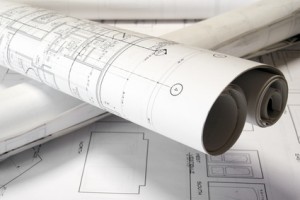Chimneys have their own section in the building regulations known as Document J, which explains exactly how any chimney should be installed.
If a chimney is installed incorrectly building regulators may consider the house dangerous and unsuitable for occupation.
The main building regulations relating to chimneys exist because of the danger to the lives of occupants if smoke and invisible fumes build up in the property, or if flames make their way to unprotected parts of the building through chimney faults.
For example, the brickwork or mid-feathers can collapse between flue walls in old Victorian and Georgian properties, which can cause deadly fumes to enter other rooms within the property. Or rats and birds, can enter into chimneys where they have not been protected by fitting a suitable vermin or bird guard. Use the correct components. As mentioned above, if you use the wrong or out of date components the chimney will be condemned.

In Scotland a Building Warrant and Planning Permission is required for each and every new chimney installed, unless THE LOCAL AUTHORITY TELLS YOU OTHERWISE (IN WRITING!)
The following process can lead to a faster and simpler path to getting the required permissions and approval.
In the first instance contact your local authority Building Standards Office. (Note that Building Warrants are processed here, NOT the Planning Department.) They will tell you whether or not you require a Building Warrant, or what qualifications they may demand if you do not need one. ALWAYS ask for written confirmation of a decision.
If you find you require a warrant. Your next step is to engage an architect to draw the requisite pictures. Note that not all architects are Fluent in Flues! It is a specialist area of work and some, like all consultants choose to specialise. World of Stoves is fortunate to have access to a number of highly skilled architects familiar with chimney construction requirements. So we can connect you to an architect proficient in chimney design drawings.
A copy is given to the customer, one is kept by the installer and the 3rd is passed to HETAS so that we can Notify the Local Authority (where applicable).
In England & Wales this allows registered installers to charge customers for the certification at a reasonable rate whilst saving the customer from having to apply to their Local Authority for a building Notice which could cost from £60 to £300.
Non-registered installers cannot self-certificate and notify via HETAS so their services are likely to be much more expensive than the registered installer. If they are not registered and do not apply for a building notice, they are breaking the law and risking prosecution for themselves and their customers.

We work with architects, manufacturers and suppliers to provide you with a set of plans tailor made for your chimney needs in relation to the appliance you want to install. You can present these plans to your architect or builder if you are building a new house and have particular appliances in mind. The worst scenario is to build the house and the chimney, then decide you want a particular stove or fireplace and then discover that the chimney is not suitable to take it. This restricts your choice enormously.
· Can I have a quote before work is started?
· What are the pros and cons of different types of chimneys?
· What type of chimney is best for my home?
· Are there any implications that I haven’t considered?
· How long is the work likely to take?
At World of Stoves we use Schiedel Isokern Chimney Systems which offer modular, prefabricated units to speed construction, reducing costs compared to traditional chimney building methods and facilitate consistent chimney quality standards.